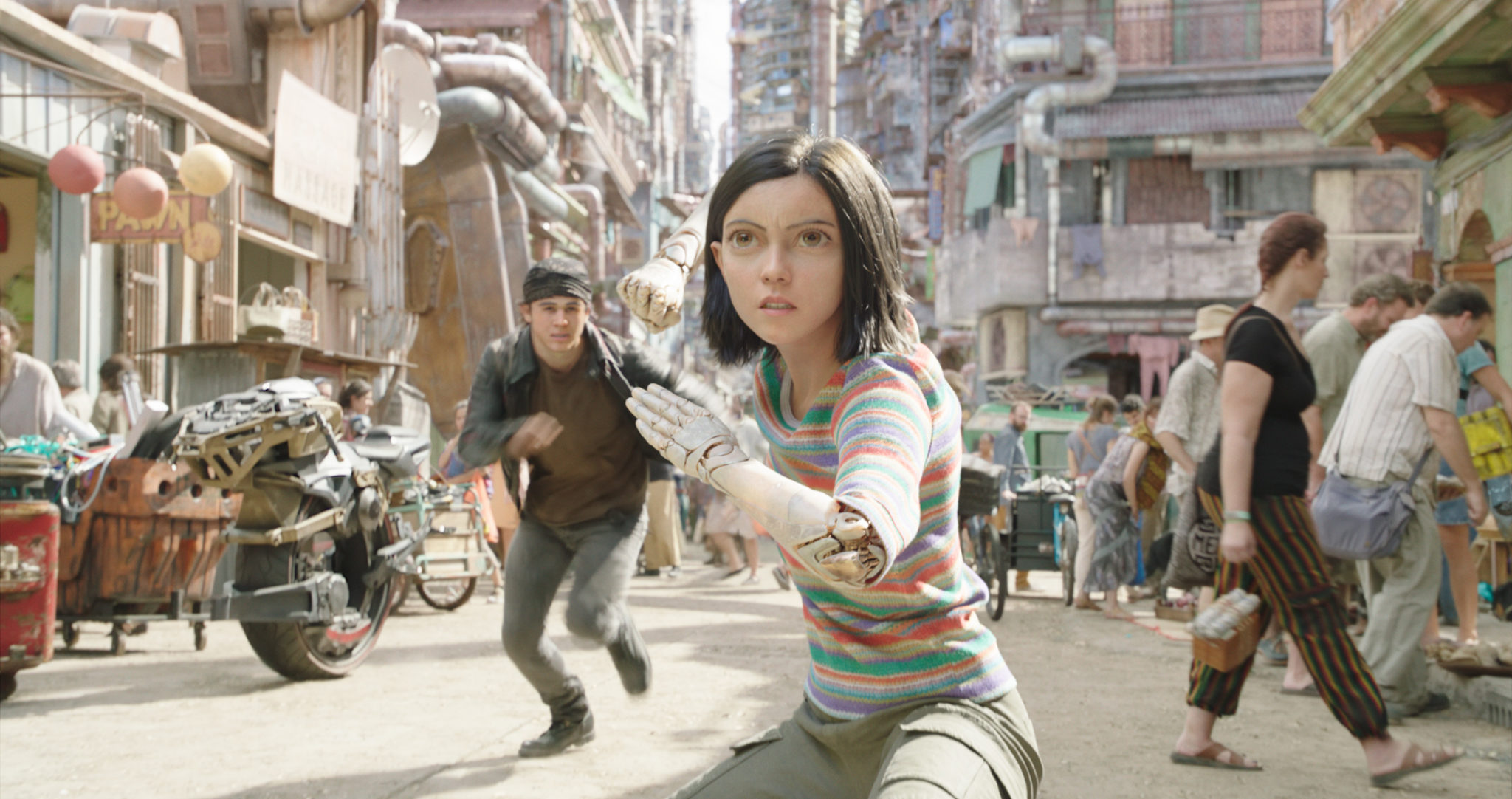Animating a lead CG character down to the smallest pores and strands of hair for the long-gestating manga-based film from director Robert Rodriguez was a task that took years for the Lightstorm team, WETA Digital, and other facilities.
VFX industry veterans Eric Hollander and Eric Saindon had been involved with the intriguing notion of producing visual effects for Alita: Battle Angel for literally decades when the opportunity finally arrived. The film’s developmental life cycle had brought it in and out of their lives numerous times since they both first read the original script, based on a manga (Japanese comic) series, when James Cameron was planning to direct it back in 2005. Then, three years ago, with Robert Rodriguez at the helm and Cameron producing, the production finally launched, posing some of the most complex CG challenges either had ever faced. After all, they were being asked to head up an effort to produce from the ground up a believable, emotive, all-CG character who would be the lead in a 3D studio film, interacting with real-world actors and environments.
“When Robert [Rodriguez] and [Hollander] came to New Zealand [to Weta Digital] for the first time, we sat in a conference room, and Robert pulled out his computer,” Saindon recently explained during a conversation he and Hollander had for the Podcasts from the Front Lines series. “He said the goal for this movie was to create the first live-action manga character brought to the screen in a realistic way. That was the driving point for the whole film: how do you bring a humanoid CG character to life with live-action characters and still feel the heart and soul of the original manga?”
Audio-only version:
Subscribe: Apple Podcasts | RSS
Hollander represented the production team at Lightstorm and supervised all facilities (Weta Digital, Dneg, and Framestore) while Saindon headed up Weta’s efforts to create a believable CG Alita (played and voiced by Rosa Salazar). The massive project moved forward as an intercontinental collaboration between Rodriguez’ production team at his headquarters in Austin, Texas, Weta’s headquarters in New Zealand, and Los Angeles.
“In [post], Eric was in New Zealand, but he and I worked together on set in Austin three years ago supervising getting the performance capture of [Salazar] and other actors,” Hollander says. “It was exciting to have the problem [of how to make Alita realistic]. I have been involved in building characters from scratch before, but never one that would be this close to being human who was the protagonist for the entire film.”
Indeed, for years, a massive R&D project produced new tools and approaches to allow performance data capture at higher fidelity than in the past.
“The big breakthrough was the amount of detail we were able to capture in performance capture,” Saindon says. “We are using more cameras at higher resolution, which gives us better information to track and capture [actors’] performances. We used two HD cameras to capture [Salazar’s] facial information — the first time we had ever done two cameras on the face. It allowed us to capture more depth information — how big her wrinkles are, how far back the corners of her mouth moves, and so on. All the subtle details we were never able to capture on a film like Avatar or the Apes movies. That extra detail helped bring little nuances of Rose’s performance into Alita and bring her to life.
“We also solved the hair on her head. As she moves her fingers through her hair, we actually capture every single strand of hair. And detail on her face like pores — we used [deep learning technology] to place pores on her face in a way that flow with her face properly, and put peach fuzz into each hair where the actual pore detail is. And for her eyes, we solved the muscles — the fibrovascular [layer] — it’s like the plane of the iris, which is a bunch of muscle strands. We solve that now in a VFX package, so that we come up with a volume of the muscle to get much higher resolution in the eyes than we have before. That allows us to get proper depth and refraction information.”
To hear more about these and other breakthroughs that enabled the making of Alita: Battle Angel, listen to the podcast file or watch the video above.
Look for a new episode of Podcasts from the Front Lines every month at StudioDaily.com. Visit our archive of past episodes for more stories from the trenches of modern movie-making.
Crafts: VFX/Animation
Sections: Creativity
Topics: Podcast Podcasts from the Front Lines facial capture facial performance capture Motion Capture performance capture
Did you enjoy this article? Sign up to receive the StudioDaily Fix eletter containing the latest stories, including news, videos, interviews, reviews and more.










